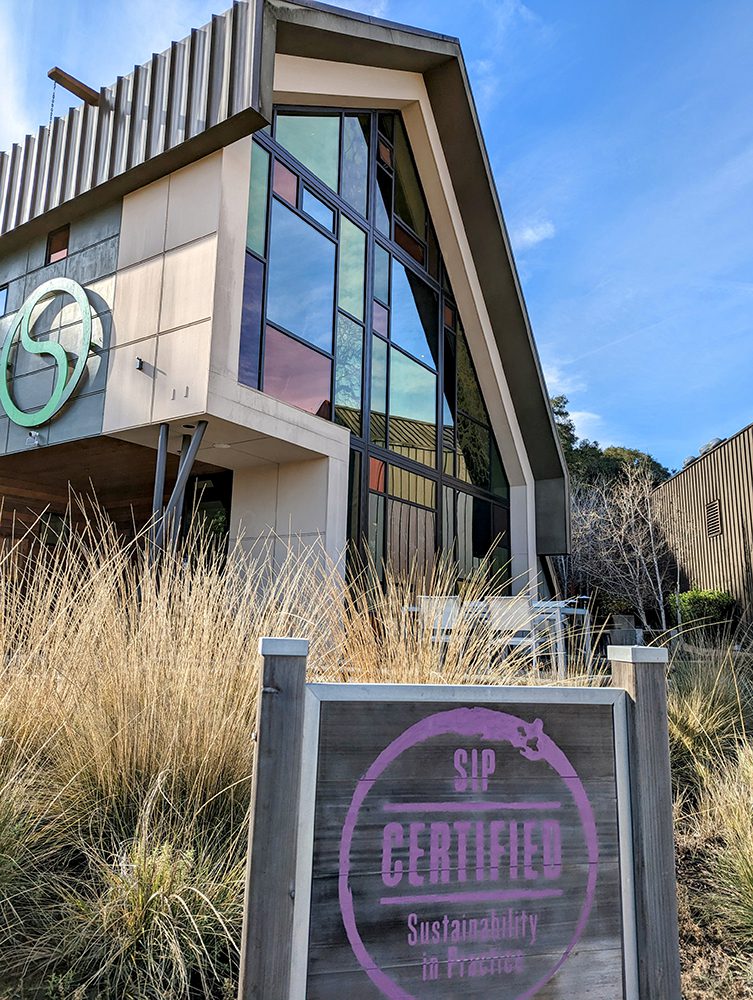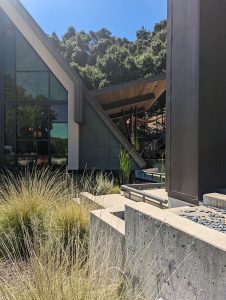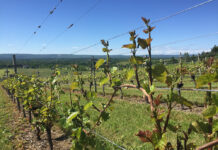
While our planet’s nickname “the Blue Planet” might imply that water resources are plentiful and available, this is not actually the case. Over 97% of Earth’s water is unusable salt water, and 2% is unavailable freshwater stored in glaciers and ice caps. This means less than one percent is freshwater that is accessible to humans to fulfill our daily water needs.
USDA’s Erika Cross gave this staggering analogy: “…if the world’s water supply were 26 gallons, our useable supply of freshwater would be half a teaspoon” (Cross 2022).
Of all our water daily uses, from hydrating ourselves and our pets to washing our hands and our cars, water for agricultural crops is one of the most important and demanding.
With the country’s population growth of nearly 100 million between 1980 and 2015, how can it be that water withdrawals for irrigation were relatively steady during that time span? The USGS posits the effects could be attributed to water conservation efforts and greater water use efficiencies (USGS 2018).
Managing agricultural water use in a responsible way can have a positive impact on water conservation while also maintaining a stable food supply for years to come. Growers can use responsible water management strategies that conserve and optimize their use, ones that increase water efficiency without decreasing crop yield. The sustainable winegrowing community does just that.

Water Sustainability in Viticulture
From water application tools and strategies in the vineyard to capturing, treating and reusing winery wastewater, sustainable wine brands use practices that minimize their water use, optimize efficiency and reduce groundwater pumping.
Agriculture can feel like a battle against natural elements. Growers must learn to work with elements out of their control, including wind, frost, degree days or a family of ground squirrels that decides to call their vineyard home. Although the same can be said for precipitation, supplemental water application is one of the few inputs the grower has significant control over.
So, how does a vineyard manager know when to irrigate the vineyard and how much water to apply? As well as using visual cues from the vines themselves, sustainable winegrowers use hard data from plant and soil moisture monitoring devices to understand how their crops and the land respond to their practices. Using this data, they make informed irrigation decisions and only apply water when it is needed.
Low-volume irrigation systems are one of the most impactful water conservation tools in the grower’s toolbox. Drip irrigation is a sustainable winegrower’s go-to method. This type of irrigation system typically uses an impressive 20% to 50% less water per-acre than a sprinkler system (EPA 2017).
In a drip system, emitters are placed along an irrigation line that runs along a vine row a few inches above the soil. The emitters slowly drip water directly onto the planted areas at the base of the vine. This is a contrast to sprinkler systems, which spray high volumes of water over large areas, both planted and not. The slower, more targeted application of water delivered by drip means a greater percentage of what is applied is actually used by the crop, less water is lost through leeching and runoff, and water isn’t applied to areas that don’t need to be irrigated.

Responsible water management does not stop in the vineyard. It can take anywhere from 2 to 20 gallons of water to produce 1 gallon of wine (Wine Business Analytics 2014) depending on a winery’s water management practices. Between using water to clean and sanitize equipment, as a wine additive and as a processing aid, gallons can add up.
Sustainable winemakers don’t let the runoff water from tasks go to waste; they recycle it. Winery wastewater can be stored in an irrigation pond or aboveground or belowground holding tanks on the property. Wherever it is stored, wastewater must be treated before being reused.
After proper treatment, recycled water can be used for more cleaning and sanitizing of winery equipment, as an equipment coolant, for frost protection in the vineyard and even for irrigating grapevines and landscaping. If you’re concerned over whether the quality of grapes and composition of the soil could be harmed by recycled water, there’s no need to fret; several studies show that when managed correctly, winery wastewater has no negative effects on the health of grapevines or vineyard soils (Hirzel et. al. 2017; Buelow et al. 2015).
Sustainability in Action: Shale Oak Winery
It’s not just winery wastewater that is captured for later use. With proper architectural planning, rainwater that falls on roofs and driveways can also be collected and used for growing wine grapes. Some wineries are designed with rainwater capture in mind, like Shale Oak Winery in Paso Robles, Calif.
When rain falls on the roofs of Shale Oak’s winery and tasting room, it is directed through a water passage that flows to a water feature. While this water feature offers patio tasters a sense of serenity, it was designed to be more than a visual pleasantry. When it fills up, the overflow goes to a sump pump, where it begins its journey to the vines.
Shale Oak captures most of the rainwater that falls on their property through this roof collection system, and by utilizing the natural flow of the terrain. The water that falls on their grounds, driveway and parking lot are diverted to numerous waterways that lead to an underground cistern. All this water that would otherwise have run off their property will join the water collected from the roofs to deficit irrigate their vines.
At the top of Shale Oak’s hill sit five 100,000-gallon water cisterns. This is where the rainwater from the wet season is pumped and held until the dry season. During the hotter, drier months when the vines are in critical growing stages, all the rainwater they captured is carried out to drip irrigate their five acres of vines and hydrate their landscaping.
Since this water capture strategy was designed into every element of their layout, Shale Oak significantly reduces their pumping needs. In fact, Sean Walter, assistant winemaker, stated, “Our 500,000-gallon capacity, most of the time, can get us through the whole growing season if we have a significant rainfall throughout the wintertime.”
Learning how responsible producers like Shale Oak Winery go the extra mile to protect natural resources has a myriad of positive effects on the whole food system. It fosters deeper connections between agricultural producers and consumers, brings attention to sustainably minded growers and their good work, and helps consumers understand more about the agricultural systems we depend on every single day.
“Food disconnect” is a term used to describe the average consumer’s lack of knowledge about where their food comes from and how it’s made. When it comes to wine, most people only see the finished product: what’s in their glass.
If your wine brand practices sustainability, there’s yet another level to this disconnect with your customers. While consumers name food and beverage as one of the most important industries when it comes to sustainability, more than one in four U.S. adults said they don’t know what makes a product sustainable (Morning Consult 2022).
This highlights an opportunity to showcase the time and careful consideration that went into your wine’s production. By highlighting your dedication to sustainability, you create a deeper connection with your customers. Wine drinkers gain valuable (and engaging) insights into agriculture. Plus, it lets them know that when they support your brand, they also contribute to a more sustainable food system.
In the next issue of the Sustainable Story Series, we share the story of a San Luis Obispo, Calif. winegrower who unintentionally discovered a unique pest mitigation strategy while developing a vineyard planting method that significantly conserves water by using everyday hardware store materials.






